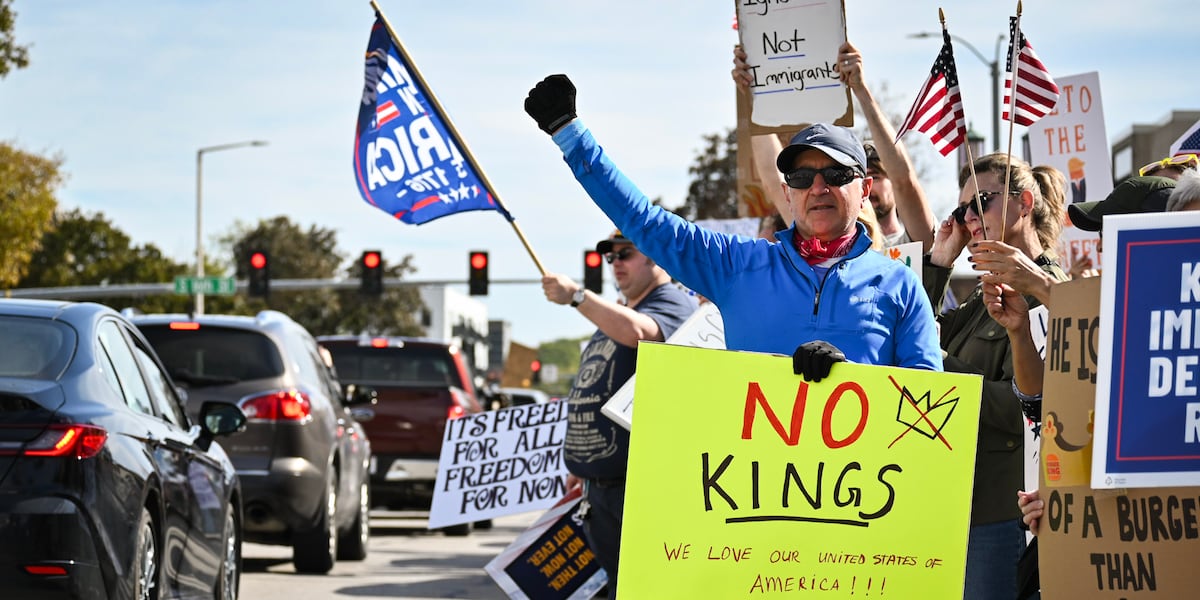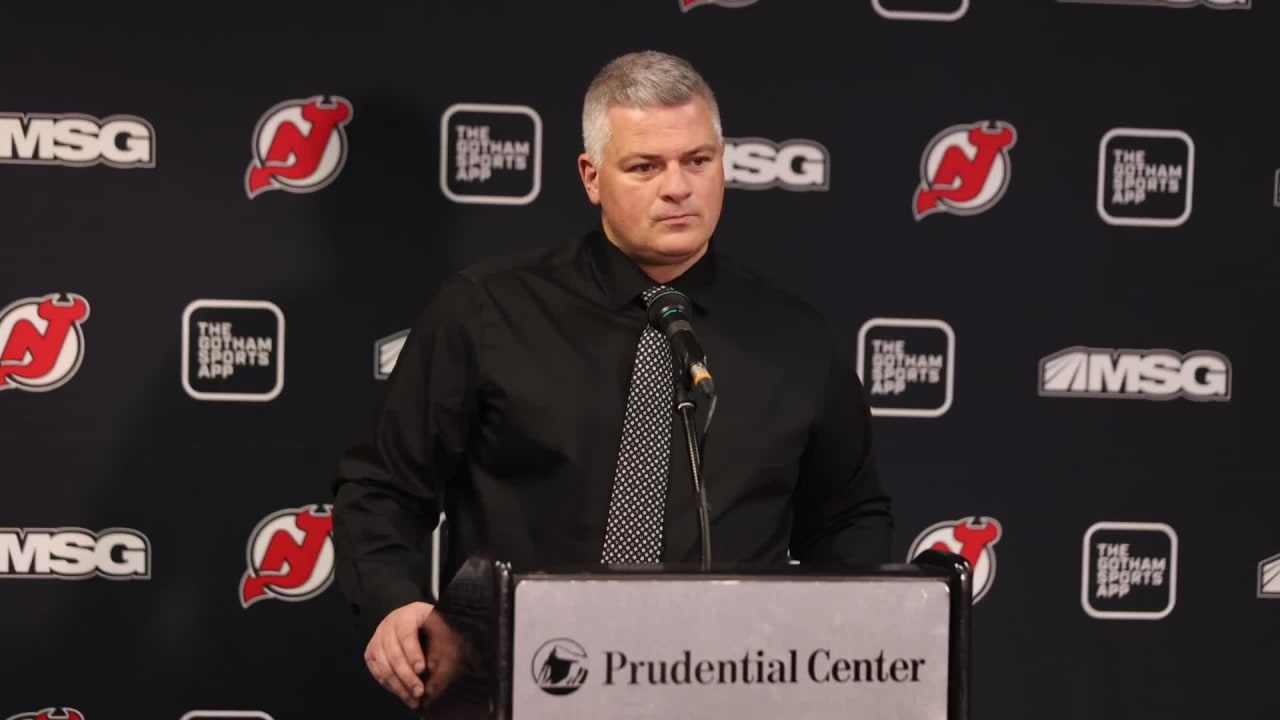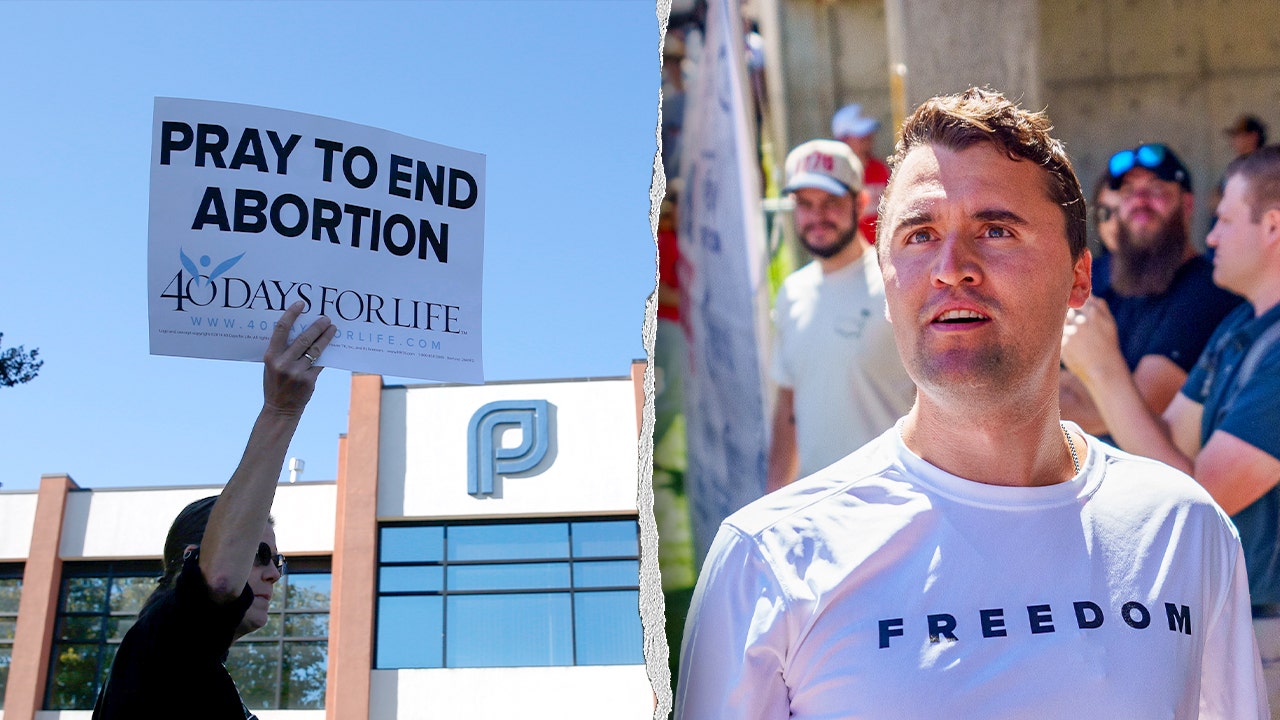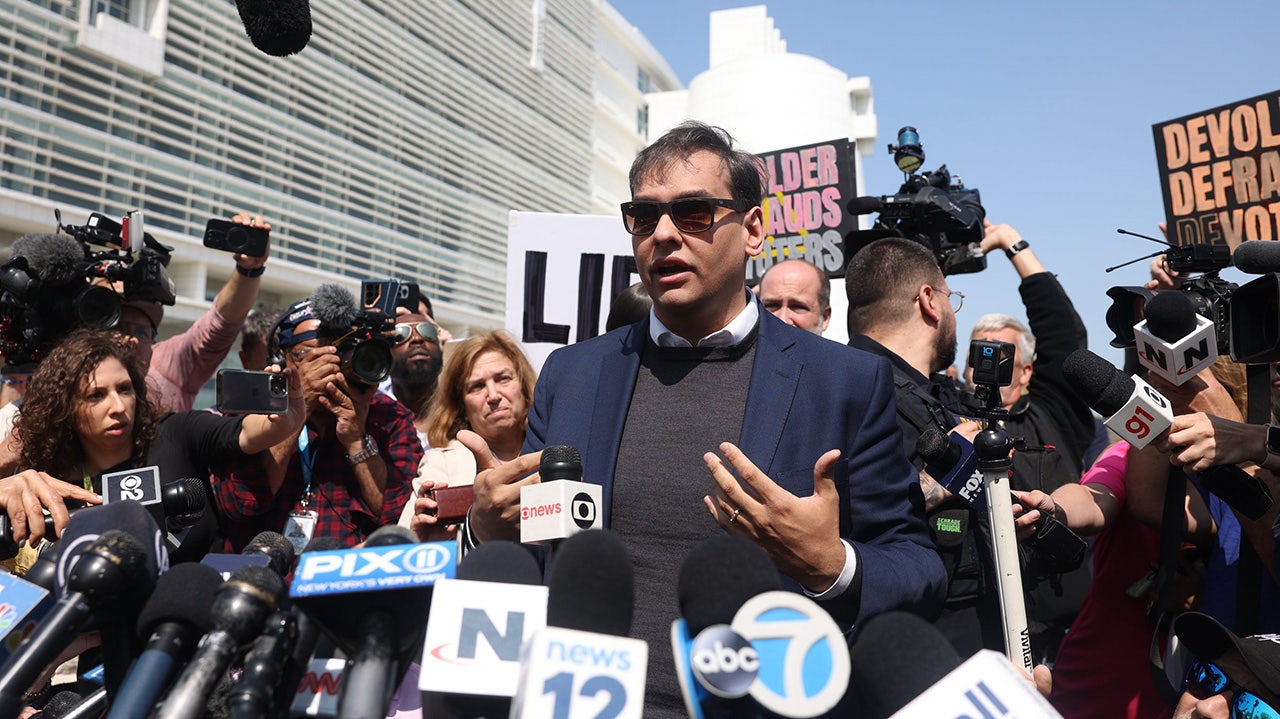Lifestyle
L.A. Affairs: After decades together we married for love — and his ‘forever’ health insurance

For decades, Carlos and I weren’t married. And I didn’t mind. I built comedy material out of it and used it at L.A. clubs such as the Ice House and the Comedy Store:
“I’ve been in the same relationship for 25 years, and I’m still stuck with the word ‘boyfriend.’ How is it we come up with new words for technology every two minutes? Texting, sexting, Googling, pinging. But when it comes to extended relationships we’ve got: lover, domestic partner, significant other, longtime companion. Recently, someone did tell me about a new term: spousal equivalent. Spousal equivalent! Why does that sound like a sugar substitute to me? Carlos is my spousal equivalent. All the great taste of a husband and only half the commitment.”
The audience always laughed. And if Carlos was in the room, someone would inevitably glance at him and shake their head, as if he were the one dragging his feet. The truth was, I was fine not being married. It wasn’t just him. It was us.
Outside of comedy clubs, when I was asked why after close to 30 years we weren’t married, I would say: “We’re waiting to see if it’s going to work.” People thought that was hysterical. It wasn’t meant as a joke. We were very different people.
There was a period when I started to call him my husband just to simplify things, but I was still as likely to call him boyfriend. “You’re very open about your relationships,” a woman once told me on Day 2 of a two-day conference. It took me a minute to realize she thought the man I referred to as “my husband” on the first day was different from the man I called “my boyfriend” the next.
For a long time, marriage wasn’t something we needed. We’d already built a home, a life, a circle of friends and a level of trust. But then I made a big career shift. After 30-plus years in advertising — comedy was my side gig — I stepped back from full-time agency leadership and went part-time by choice, finally giving my workaholism less oxygen. With that choice, though, I lost my healthcare. Suddenly, marriage wasn’t a punchline anymore.
Carlos had SAG-AFTRA coverage, the kind of “forever” insurance that came with vesting. If I became his legal spouse, I’d be protected too. So after three decades of spousal equivalency, we tied the knot. For love, yes, but also for health insurance.
Except “forever” wasn’t forever. During the COVID-19 pandemic, SAG-AFTRA stripped senior performers of their healthcare. Carlos lost his coverage. Spouses of senior performers got to stay on the plan until we were kicked off at 65 — the age I turned this year. The promise of permanence vanished.
Marriage, it turned out, didn’t just change our status. It also changed our relationship to the house. Before, we had owned it as “tenants in common,” each holding 50%. After we married, we could hold it as community property. Both of us fully owners. That felt permanent too.
Until one day I heard about racial covenants in Los Angeles real estate. I pulled out the original 1921 deed and saw the words that would have disqualified both of us from living where we do:
“No part of said premises shall ever be leased, rented, sold or conveyed to any negro, or any person of African descent, or of the Mongolian race, or of any race other than the white or Caucasian race.”
Neither Carlos, who is Afro-Panamanian, nor I, being Jewish, would have been allowed to live here when that clause was written. We could only be here now because, after 1948, the courts said such covenants were unenforceable.
Suddenly, all I saw were the parallels. First, “forever” insurance that wasn’t forever. Then, “community property” that came with a deed that once rejected our very existence. Now, even the protections that allowed an interracial couple like us to marry in the first place — Loving v. Virginia — feel shakier than ever. Turns out both interracial marriage and racial covenants are protected by 14th Amendment rights. Just like Roe v. Wade was, and we all know how that turned out.
I never thought much about permanence until recently. I was happy with spousal equivalency, with the idea that every day Carlos and I chose each other without needing the state to ratify it. But age, illness and insurance have a way of forcing pragmatism onto romance.
In Los Angeles, permanence has always been an illusion. Hillsides give way to landslides. Wildfires erase entire neighborhoods. Sanctuary policies are challenged, and immigration raids leave families shattered overnight. Even the freeways we once thought immovable split and buckle with time. Why should marriage or property be any different? Paperwork gets rewritten. Laws get repealed. Protections you thought were settled are suddenly up for debate.
The city reminds us daily that permanence is fragile. And yet, we stay. Not because the paperwork binds us, but because we choose to. After all those years of joking about “spousal equivalency,” it turns out the real equivalency is this: permanence on paper versus permanence in practice. We’ll take the latter, every time.
The author is a writer and storyteller for page, stage and the advertising industry. She lives in West Hollywood with her husband and Instagram-viral cat and dog. Visit her website at rochelle-newman.com.
L.A. Affairs chronicles the search for romantic love in all its glorious expressions in the L.A. area, and we want to hear your true story. We pay $400 for a published essay. Email LAAffairs@latimes.com. You can find submission guidelines here. You can find past columns here.

Lifestyle
Frankenstein is the monster (movie) Guillermo del Toro was born to bring to life

Oscar Isaac as Victor Frankenstein in Frankenstein.
Ken Woroner/Netflix
hide caption
toggle caption
Ken Woroner/Netflix
Guillermo del Toro has made several monster movies of a particular bent — soulful, swoony, feverish films about grotesque-looking creatures who prove themselves more deeply human than the humans who reject them. Hellboy (2004) was a half-demon with a full heart. The Amphibian Man in The Shape of Water (2017) was an emo f-boy with gill slits. Even the titular marionette in Guillermo del Toro’s Pinocchio (2022) was such a mensch that he earned the right to trade in his knotty pine physiognomy for a flesh bag.
Soulful, swoony, feverish, with a narrative that stacks the emotional deck in favor of the hideous outcast — I mean, that’s pretty much the jacket copy you’d find on any volume of Mary Shelley’s 1818 novel Frankenstein, right?

Which is why this seems like the perfect match between story and muse; certainly del Toro’s been talking about making his own version of the tale for decades, calling it his “lifelong dream.”
That dream is now realized, and while the resulting film captures the tone and spirit of the original novel in all its breathless zeal and hie-me-to-yon-fainting-couch deliriousness, the many narrative tweaks del Toro has made — some of which work, some of which don’t — ensure that you’d never mistake his Frankenstein for anyone else’s.
A monster matriculates

Boris Karloff in his role as the monster of Frankenstein.
AP/AP
hide caption
toggle caption
AP/AP
It’s light-years away, for example, from James Whale’s iconic 1931 version, which surgically implanted Boris Karloff’s lumbering, flat-topped, bolt-necked monster into the culture. Because while Whale was faithful to the bones (heh) of the novel, Karloff’s Creature never grew, intellectually or aesthetically. Maybe Whale was worried doing so would rob the monster of its primal power to clomp its way into his audience’s nightmares.
The book’s Creature, on the other hand, puts itself through a kind of hilarious autodidactical speed run, devouring Plutarch’s Lives and The Sorrows of Young Werther and, famously, Paradise Lost. Which is why you get the following disconnect:
Book Creature: “I ought to be thy Adam; but I am rather the fallen angel, whom thou drivest from joy for no misdeed.”
Karloff’s Creature: “FIRE BAD.”
There’s a lot more of book Creature in del Toro’s Frankenstein, which is good, because his monster inhabits the (literally, in this case) sculpted frame and brooding gaze of Jacob Elordi. For roughly half of his time onscreen, Elordi’s more or less in “FIRE BAD” mode, stumbling around in yellowish strips of cloth that, intentionally or not (but let’s face it, probably intentionally) evoke the gold lamé speedo sported by his Rocky Horror Picture Show analog.

Jacob Elordi as The Creature in Frankenstein.
Ken Woroner/Netflix
hide caption
toggle caption
Ken Woroner/Netflix
But before long the Creature installs that all-important upgrade: He secretly observes the daily life of a loving family, befriends their kindly blind patriarch (David Bradley) and avails himself of their reading matter. Elordi makes his Creature 2.0 just as compelling as the launch version; now outfitted with the full complement of human-emotion DLC (rage, yes — but also gratitude, empathy, sorrow and regret), he sets out to confront Victor (Oscar Isaac), his preening, arrogant brat of a creator.
This is all straight from Shelley’s novel, of course — it’s just inflected by del Toro’s maximalist, heart-affixed-firmly-to-the-sleeve sensibility, which extends to absolutely everything onscreen. The production design goes gratifyingly hard, featuring drawing rooms so huge their walls vanish into shadow, landscapes so vast they swallow the characters — and the buildings they occupy.

Victor’s lonely tower — the site of the Creature’s birth — is a gargoyle-festooned ruin atop a cliff so open to the elements that its rooms and staircases are piled with leaves and other bits of decaying organic matter. Its tiled floors feature yawning pits like frozen whirlpools, foreboding but strangely beautiful.
Spare parts
But del Toro’s spin on the material goes beyond its look and feel – he’s made several changes to the story that leave you wondering what narrative work they are actually doing, besides adding needless complications to justify the film’s two-and-half-hour running time.
He devotes a lot of attention — far more than the book does — to the life of young Frankenstein (heh), played by Christian Convery. Charles Dance adds yet another “stern father” performance to an IMDB page teeming with them, as Victor’s demanding dad, and their frosty, lightly sadistic relationship is clearly meant to foreshadow the one Victor will have with his Creature. I couldn’t help but be reminded of Tim Burton’s Charlie and the Chocolate Factory, and its mystifying determination to explain to us that Wonka only became the candymaker he did because his father was … a dentist.

The film also introduces Christoph Waltz as Harlander, a mysterious figure who acts as Victor’s financial patron. The character ostensibly exists to contrast Victor’s scientific zeal to the greedy drive of capitalism, but I can’t shake the conviction that he could easily lift out of the film without leaving a hole.
A subplot involving Mia Goth’s Elizabeth represents another significant alteration that’s puzzling at first — why make Elizabeth the fiancée of Victor’s brother William (Felix Kammerer) instead of just making her Victor’s fiancée, as she is in the book?
The answer lies in the largest and most essential change that del Toro is making to the story here, which is to turn Victor into even more of a jerk — and, by extension, to cast the Creature as even more sympathetic.
It’s there in Isaac’s bluff, snotty, snooty take on Victor, who’s forever declaring his genius to anyone in earshot. It’s there in his snarling disgust at Elordi’s poor, chained up Creature. And it’s there in Victor’s not-remotely-sly attempts to seduce his own brother’s fiancée.

Elizabeth, for her part, is totally on board with del Toro’s efforts to get us on the Creature’s side; Goth shows us a young woman smart and self-possessed enough to recognize that underneath all the sutures and skin grafts, it’s still Jacob Freaking Elordi we’re talking about, here, people.
Del Toro doesn’t stop there — he also elides book-Creature’s most unsavory aspects and actions to highlight his version’s wet-eyed soulfulness and further cement its status as a blameless thing grievously wronged by the world in general, and by Victor in particular. It’s a marked adjustment from the novel, yes — but one that seems inevitable, given del Toro’s body of work, and his resolute need to portray the outsider as hero.
He’s never been subtle about this, and he’s not here either: At one point a character regards Victor. “You are the monster,” they tell him.
I cannot hope to convey, reader, just how wildly unnecessary that line is, given literally everything about the film we’ve been watching up to that point. It’s del Toro gilding a lily that he’s already spent more than two hours painstakingly crafting out of pure, 24-carat gold.
And yet it works, for him, and for his movie. Del Toro couldn’t possibly do anything less, and, given how perfectly suited he is to tell this story in this particular way, you wouldn’t want him to.
This piece also appeared in NPR’s Pop Culture Happy Hour newsletter. Sign up for the newsletter so you don’t miss the next one, plus get weekly recommendations about what’s making us happy.
Listen to Pop Culture Happy Hour on Apple Podcasts and Spotify.
Lifestyle
Video: The Victoria’s Secret Fashion Show in 30 Seconds

By Vanessa Friedman, Coleman Lowndes, James Surdam, Sutton Raphael, Gabby Bulgarelli, Jillian Eugenios, Zach Caldwell and Edward Vega
October 17, 2025
Lifestyle
Australia’s rainforests are releasing more carbon than they absorb, warn scientists

Australia’s tropical rainforests have become the first in the world to release more carbon than they absorb, in a trend linked to climate change, a study has found.
Rainforests are usually regarded as so-called “carbon sinks” as they absorb more emissions than they emit with new trees offsetting the carbon released by dead ones.
But a study looking at data from Queensland forests found that extreme temperatures have caused more tree deaths than growths.
The lead author of the study, which was published in science journal Nature, said the findings have significant implications for global emissions reduction targets which are partly based on how ecosystems – such as rainforests – can absorb carbon.
“Current models may overestimate the capacity of tropical forests to help offset fossil fuel emissions,” said Dr Hannah Carle of the Western Sydney University.
With fewer new trees, the report found that the trunks and branches of dead trees – known as woody biomass – became carbon emitters, rather than carbon absorbers, about 25 years ago.
“Forests help to curb the worst effects of climate change by absorbing some of the carbon dioxide released from burning fossil fuels, but our work shows this is under threat,” said Dr Carle.
Dr Carle added that said an increase in trees dying in recent decades was due to climate change such as more extreme temperatures, atmospheric dryness and drought.
Based on 49 years of data from 20 forests in Queensland, the report also found a rise in the number of cyclones and the severity of them was killing more trees and making it harder for new ones to grow.
“We have in this study evidence that Australia’s moist tropical forests are the first of their kind globally to to exhibit this [woody biomass] change,” Dr Carle said.
“And that’s really significant. It could be a sort of canary in the coal mine.”
Senior author Patrick Meir also described the results as “very concerning”, telling news agency AFP that it was “likely that all tropical forests [would] respond fairly similarly” – but added that more data and research would be needed to make a fair assessment.
Australia, one of the world’s biggest polluters per capita, recently announced its new carbon reduction targets, pledging to cut emissions by at least 62% compared to 2005 levels over the next decade.
The country continues to face global criticism for its continued reliance on fossil fuels, with the government allowing one of the country’s largest gas projects -Woodside’s North West Shelf – to keep operating for another 40 years.
Last month, a new report into the impact of climate change found Australia had already reached warming of above 1.5C and that no community would be immune from “cascading, compounding and concurrent” climate risks.
-

 Augusta, GA1 week ago
Augusta, GA1 week ago‘Boom! Blew up right there’: Train slams into semi in Grovetown
-

 Alaska4 days ago
Alaska4 days agoMore than 1,400 seeking shelter as hundreds wait to be evacuated after catastrophic Western Alaska storm, officials say
-

 Education1 week ago
Education1 week agoVideo: 3 Former College Teammates Reunite on Rangers Coaching Staff
-
Business1 week ago
Los Angeles Times Media Group takes step to go public
-

 Wisconsin1 week ago
Wisconsin1 week agoAppleton Public Library wins 2025 Wisconsin Library of the Year award for distinguished service
-

 Vermont1 week ago
Vermont1 week agoFeds: Springfield dealer ran his drug business from Vermont jail
-
Virginia1 week ago
Match 13 Preview: #8 Virginia
-

 North Carolina6 days ago
North Carolina6 days agoGuide to NC State Fair 2025: Tickets, transportation, parking, new rides and special event days
















